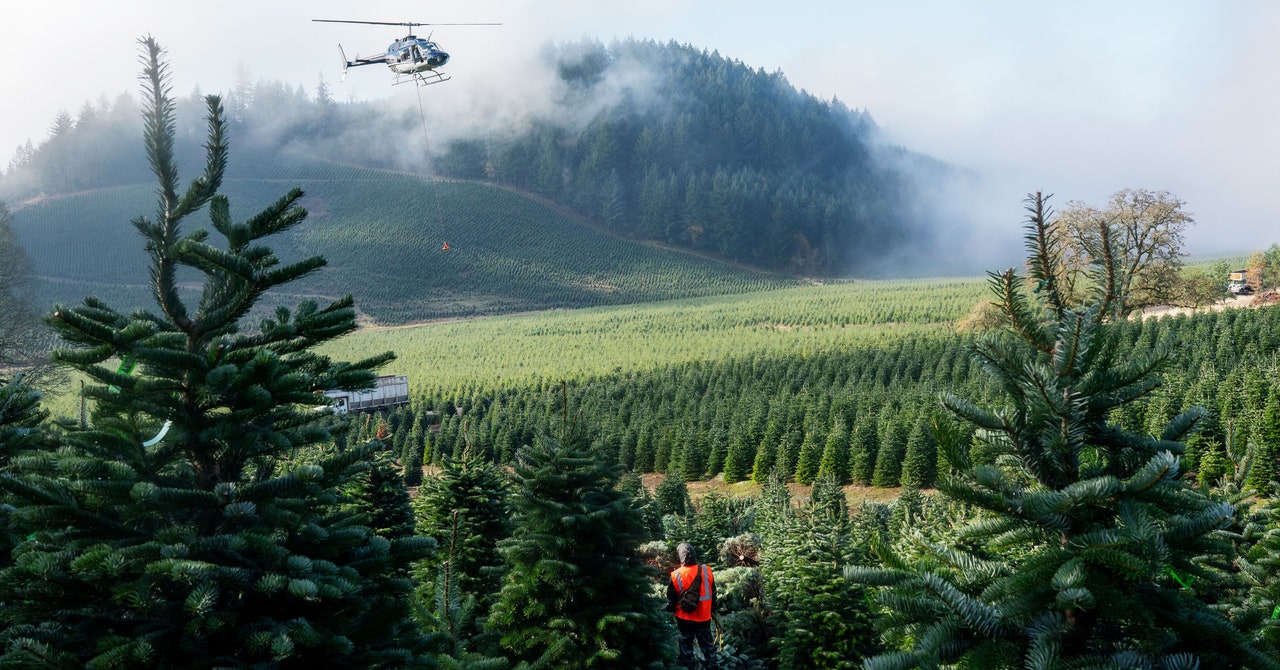
This story originally appeared on High Country News and is part of the Climate Desk collaboration.
Perhaps no single Christmas custom is more ubiquitous than putting up the Christmas tree. It originated in eastern Europe more than 500 years ago, when people decorated evergreen trees with roses or apples as symbols of Eve and the Garden of Eden. Today, that ancient tradition is a booming business that employs nearly 100,000 people, garners close to $2 billion in revenue, and harvests 25 million to 30 million natural Christmas trees annually—about 30 percent of them from the Pacific Northwest. Sales of real Christmas trees have increased by nearly 20 percent since 2020, though fake trees are booming too.
Artificial trees have drawn criticism for the chemicals used in their manufacturing, as well as their carbon footprint. But live trees have drawbacks too. One in particular—the agricultural chemicals and insecticides, fungicides, and herbicides used in tree farming—has drawn remarkably little attention, partly owing to a lack of research on the risk to consumers or farmworkers.
People who love their traditional green Christmas trees, even those worried about environmental impacts, seldom think about how those trees are grown. “I’ve used a fake tree for about 10 years,” said Denise Castro, from Eugene, Oregon. “Prior to that I bought real trees. I never considered that there might be pesticides on trees.” After High Country News reached out to her, she started asking longtime friends if they’d thought about it. But pesticides were either something they hadn’t considered or weren’t particularly worried about. “You can count me in on this consensus,” said Michele Zemba. “Pesticides never crossed my mind when buying a real tree.”
Among the most common chemicals used by the industry are chlorothalonil, atrazine, glyphosate (better known as Roundup), and dimethoate, all of which have known impacts on human health. The half-life of some of these chemicals ranges from days to years, depending on the chemical involved and other factors. Over time, these pesticides accumulate in the environment, lingering in soil and groundwater and building up in plant and animal tissues—especially in human beings, who perch at the top of the food chain.
In Oregon, low levels of pesticides are commonly found in surface and drinking water. In 2021, researchers at Portland State University released data showing that forestry-related pesticides were present in Oregon’s coastal waters, a sign that they were flowing downstream in the state’s rivers. But it’s difficult to quantify any particular industry’s contribution to such widespread, low-level pollution over long periods of time—or to calculate the risks to consumers. Laura Masterson, an organic farmer and former Oregon Department of Agriculture board member, acknowledged that it’s another gap in the science. “We don’t really understand microdose impacts [of these chemicals] on health.”

